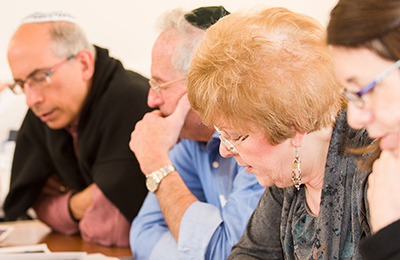Vaetchanan

The first Shabbat after Tisha b’Av is known as ‘Shabbat Nachamu’ from the first words of the Haftara written by Isaiah: ‘Nachamu, nachamu’ – ‘Console yourselves’. And we need consolation after the three sad weeks between the two fasts of 17 Tammuz and 9 Av when the Haftarot have been messages of rebuke. We certainly need consolation in our current times, and this week is the first of seven weeks of such messages. But this is not what I want to bring to address today.
Our Torah reading includes the second version of Aseret Hadib’rot – the Ten Commandments (Deuteronomy 5). They vary very little from the earlier version in Parashat Yitro (Exodus 20). Both versions present an enigma for the new Torah reader because there are two sets of cantillation marks and without understanding these two sets of marks, people are flummoxed! (NB Cantillation marks are known in Hebrew as ‘ta’amei hamikra’ and in Yiddish as ‘tropes’.)
Let’s unpack it. The two sets of tropes are known as Ta’amei Elyon (high cantillation) and Ta’amei Tachton (low cantillation). This is itself confusing! It has nothing to do with placing the trope marks above or below the text. It has nothing to do with the pitch of singing them either! The cantillation marks are primarily grammatical markings that parse and make sense of the text and include correct word emphasis. They are not merely instructions in how to chant.
For public readings of the Ten Commandments (Parashat Yitro, Parashat Va’etchanan and also on Shavuot) we use Ta’amei Elyon. This tradition arranges the Ten Commandments into exactly that: one verse for each commandment. It is a clear, dramatic reading.
On the other hand, the Ta’amei Tachton represent the ‘normal’ reading, leaving the text in twelve verses of average length. But that’s not what we hear in shul.
In some editions of the Chumash we see the two sets, Elyon and Tachton, superimposed one over the other and even cognoscenti would have to work out carefully which tropes to use at which time. There are some helpful editions, such as Dr Abraham Cohen’s Soncino, which shows only the Ta’amei Elyon to avoid confusion.
Commandments 6, 7 and 8 – Lo tirtsach (You shall not murder), Lo tin’af (You shall not commit adultery) and Lo tignov(You shall not steal) have a special melody – an ancient motif which bears resemblance to that used for the days of creation, the Song at the Sea and the journeys through the wilderness; some also use them for announcing the chiefs of the tribes of Israel. We use it, too, for the ending of each of the Five Books when we sing Chazak Chazak V’nitchazek: the rousing chorus “Be strong, be strong, and we will be strengthened!”
Our glorious tradition sometimes presents us with enigmas like this. There is joy in delving in to find out what they are all about. The sad thing is when we find something confusing and abandon it, or take it on face value without questioning. But for those of us who love to find out, there are many examples like this, where the Jewish tradition keeps us busy in the quest of Torah!
Chazan Jaclyn Chernett is chazan at Kol Nefesh Masorti Synagogue, founder and director of the European Academy for Jewish Liturgy and Vice President of Masorti Judaism




